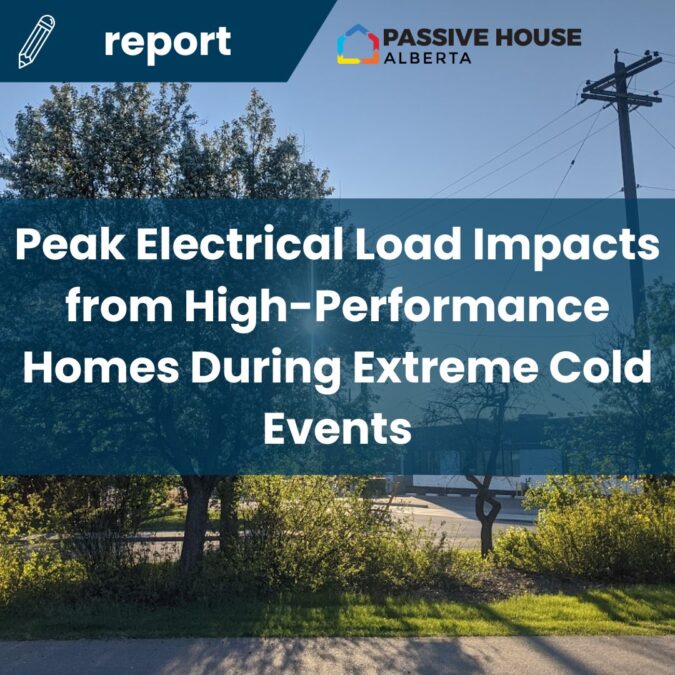Author/Contributor: Passive House Alberta (written by Frank Crawford, P.Eng.) with funding provided by Alberta Ecotrust and ENBIX, and support from Ecosynergy, 4 Elements Integrated Design Ltd., Solar Homes Inc., SNAP, and Kevin Brown (thINK)
Alberta Context:
Passive House Alberta conducted a research project and gathered real-world data on peak electrical load impacts in high-performance homes during extreme cold events. This study focused on a specific extreme cold weather event in Alberta and western Canada in January 2024, where temperatures dropped to -46°C.
Summary:
You can find ENBIX’s summary blog here.
Data was collected through surveys of high-performance homeowners and HVAC professionals, and historical electrical data consumption from utilities. The research also gathered feedback on occupant comfort, equipment performance, and resilience, and compared this data with “typical” homes in cold regions.
This report builds on the “Electrification Without a Service Upgrade Report” by Passive House Alberta.
It indicates that even in cold climates, the peak electrical loads and consumption of high-performance all-electric single-family homes can be met by a 100-amp, 240-volt electrical service when EV charging is controlled via a circuit pauser. When homes are grouped into multi-unit complexes, the peaks are further reduced.
Combining these findings with the “Electrification Without a Service Upgrade Report”, there seems to be no electrical code or measured actual value reason to upgrade from a 100-amp, 240-volt electrical service as part of full electrification, provided a high-performance building envelope or a Ground Source Heat Pump (GSHP) is incorporated.
Comparing surveyed high-performance all-electric homes to 55 randomly selected cold-climate homes (using fossil fuels), going all-electric roughly doubles the 15-minute, 1-day, and 1-week electrical consumption while significantly reducing fossil fuel consumption. GSHPs have peak electrical loads similar to the “typical” 55 random homes compared in the study, but eliminate fossil fuel consumption, making them a highly recommended option.
Local utilities will still need to determine what impact these increased electrical loads will have on the generation and distribution mix of the future electrical grid as the number of all-electric high-performance will continue to grow to meet Canada’s GHG reduction targets.
Read the full report to access all the data.


